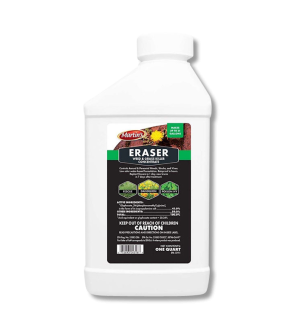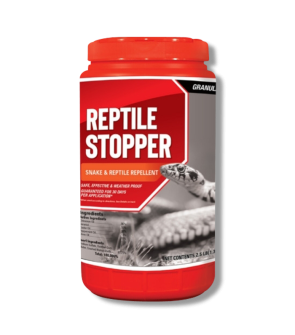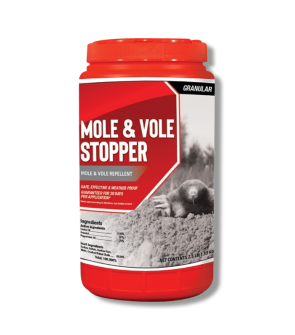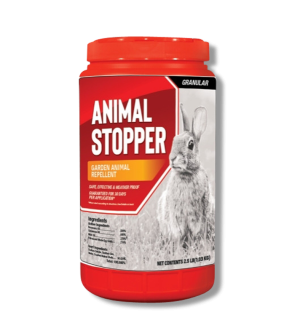Summer Ornamental Garden and Landscape Tips
Most Effective Products
Summer Ornamental Garden and Landscape Tips
This page is a general article discussing potential ornamental plant problems you would encounter in the summer. With this guide, you will learn professional tips and techniques to better prepare your ornamentals against summer heat and pest activities in residential areas.
Surviving the summer heat can be difficult for homeowners, but it is equally difficult for your ornamental shrubs, trees, and flowers. Scorching temperatures and hot winds can threaten to dry out your lush green foliage and colorful blooms. Maintaining your ornamentals prior too or at the beginning of summer is the best option for areas with hot, dry weather.
Ornamental plants are generally classified as either flowering or non-flowering such as shrubs. Often, many homeowners assume these type of foliage requires little support due to the constant sunlight, on-going plant growth, and little cold weather activity. But sooner than you think, the flowers are gone, weeds arise, and plants become bare or discolored.
While the summers dry heat creates an inhospitable environment for certain foliage, there is still a way to keep ornamentals alive. Start your ornamental plants right by preparing them against upcoming summer weather by following along with the tips and products suggested in this DIY guide.
Determine Plant Growing Conditions

Once the summer heat starts to rise those flowers that once bloomed beautifully in the spring could diminish. In the world of ornamentals, not every plant will grow well with each growing season. Some plant species are naturally more resistant to heat, humidity, and drought. For example, plants that are tolerant to heat could have thick cuticles or waxier leaf surfaces helping to lower transpiration rates. Other plants may have smaller leaves, leaves covered in fine hairs, or deeper root systems to minimize water loss.
Typically, summer annuals are best as they germinate in the spring, flower or bloom in the summer, and produce seed in the fall.
Deadhead/Prune Foliage

Depending on whether your ornamentals are flowering or non-flowering will determine which type of pruning to do.
Deadhead is pruning, but instead of trimming dormant or dead branches you are only removing faded or old flower heads. Pruning involves the process of trimming or removing any part of the plant from the stem, leaves, or branches for the purpose of thinning, shaping, or removing dead or diseased foliage parts.
Annual non-flowering and flowering foliage will need year-round deadheading as well as on-going pruning. The structure of a plant will determine where to remove old foliage.
Water Early

Heat-stressed plants often roll up or cup their leaves to reduce the leaf surface to heat and reduce moisture loss. Dry edges around the leaves are another sign of under-watering in foliage. Although it may look alarming, the rest of the plant is still alive and could do with regular watering.
Water the soil around the base of the plant to help keep plants cool and moist while suppressing weeds, fungi, and pest activity. Give your ornamental plants an inch of irrigation early in the morning no more than once per week; this way less water is lost to evaporation and plants are hydrated before heat sets in. Keep in mind that watering in the middle of the day during high heat conditions could result in possible leaf burn.
Mow Around Landscape

Mowing around your ornamental landscape allows desired plants to bloom and removes competition for space, nutrients, and water from overgrown turf. While it sounds simple, you will want to avoid cutting off flower heads or desired plants, and dispelling grass clippings over landscaped areas.
When you mow, ensure the clippings are stored in a bag or least that the lawn mower's discharge chute is pointed towards the lawn and away from your ornamentals. Mow once along the entire length of the ornamental landscape and keep as close to the edge as possible. Grass clippings left in ornamental garden beds can create cover for pests or collect moisture or develop fungi.
If there is a risk of cutting the ornamentals, then you may want to consider trimming the grass with a weed trimmer.
Keep Pests Away

Pests such as aphids, Japanese beetles, flea beetles, spider mites, gophers, moles, voles, snakes, and more can become abundant during the summer so much so it can become overwhelming. Your shrubs and trees can suffer enough damage and die just from pest activity alone.
Regularly inspect your plants and the surrounding soil for insect and animal activity. You can look for spots or holes in leaves, broken stems, and discolored foliage, upturned dirt, or visible pest may indicate action to be taken. If flower heads or parts of the plant disappear or you see torn and bitten foliage its likely that animals such as rabbits or deer have visited.
Consider fencing around ornamental plants that animals have visited. Deer will need fencing as high as 8 feet since they are excellent jumpers. Since animals heavily depend on their taste of smell, taste, and touch then try humane control efforts such as repellents. We recommend Animal Stopper Granular Repellent for pests such as rabbits, skunks, woodchuck, gopher, and groundhogs. For moles, voles, and shrews try Mole & Vole Stopper Granular Repellent. Any active snake infestations consider Reptile Stopper Granular Repellent.
Each of these repellents work with natural ingredients that effect the animals taste, touch, and smell without harming the critter itself. Once applied, these products work to deter these pests for up to 30 days. You will need to use a hand spreader to evenly distribute these products around the perimeter of your home and flower bed.
To keep insects away from your ornamental plants, you will need to apply a broad-spectrum residual insecticide like Supreme IT at the beginning of May or June. This insecticide will work on active infestations, but it's best to do so before population can rise. Supreme IT is a broad-spectrum bifenthrin based insecticide that will eliminate over 70 types of pests around your home and ornamentals such as shrubs, trees, and flowers. Once it dries, this product will leave a residual that will continue to control insects for up to 90 days.
This product will need to mixed with water in handheld pump sprayer before application. Determine how much Supreme IT to use by measuring the square footage of the treatment area. To do so, measure the length and width of the treatment area in feet then multiply them together (length X width = square footage). Depending on your targeted pest, you will apply between 0.25 to 0.5 of product per gallon of water over 1,000 sq. ft. of ornamentals.
Apply your mixed solution over ornamentals and shrubbery, being sure to treat the top and bottom of plant leaves. Allow the treated areas to dry completely. Insects that make contact with the spray or its residual effect will have their nervous systems impacted and will die in several hours. During mid-to-late summer it may be necessary to make more frequent treatments, possibly at higher rates to control pests such as spider mites.
Eliminate Weeds

As your ornamental plants grow during this time, so will the weeds. These invasive plants will compete with desired foliage for nutrients, sun, water, and space. Just like your summer ornamentals these weeds are also adapted to the summer heat making them more difficult to control.
Some weeds can be removed by hand, but to control hardier perennial weeds, you will need to make sure their entire root systems. Non-selective herbicides like Eraser 41% Glyphosate can be applied as a spot treatment in ornamental landscapes to kill any undesired weeds. Eraser 41% Glyphosate is a non-selective herbicide that contains the active ingredient glyphosate 41% and a surfactant to increase it's effectiveness over various broadleaf and grassy weeds.
Just mix 1.5 or 2.5 fl. oz. of Eraser 41% Glyphosate in 1 gallon of water per 300 sq. ft. With your mixed product, spray the surface of weeds until it is wet and evenly coated, but not to the point of run off. Be careful not to apply this product over your ornamentals and to use a barrier like a cardboard box around weeds to prevent spray drift.
Glyphosate has no soil activity and must be absorbed through a plant's leaves to take effect. You should see visible signs of weeds dying within several days to 2 weeks. Frequent weeding or spray treatments will stop these unwanted foliage from seeding and multiplying, making for less physical labor in the future.
Key Takeaways
How Do You Get Rid of Weeds in the Hot Summer
- Pull up weeds by hand as they appear or dig them out with a gardening hoe or garden shovel. For hardier weeds, use a non-selective herbicide like Eraser 41% Glyphosate.
How Do I Keep My Ornamental Summer Garden Cool in the Summer?
- To keep your ornamental plants from burning or drying out perform irrigation practices early in the morning. Water with an inch of irrigation no more than once per week and treat the base of the plant rather than the leaves. You can also manage the sunlight that hits them by planting foliage underneath trees or whatever else creates shade. You may also install a tarp or sheet to cast shade on ornamentals.
Should You Water Ornamental Garden or Landscape Every Day in Hot Weather
- During the hot summer, it is still possible to overwater foliage. Ornamental plants should receive no more than inch of irrigation once per week.















































































































































































































































































































































































































































































































































